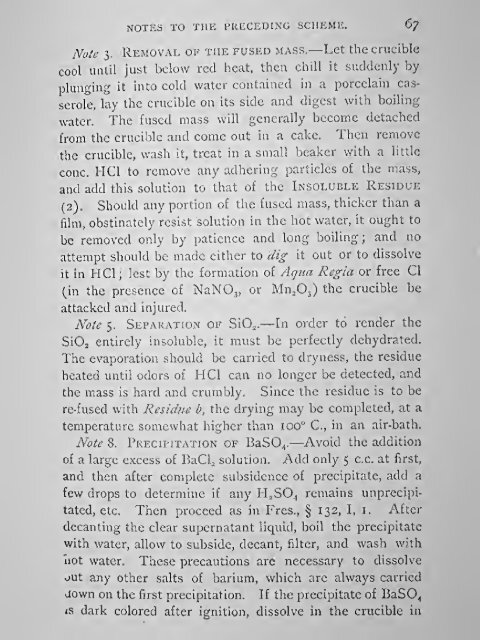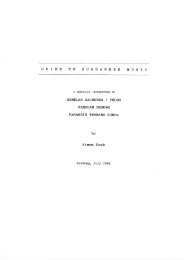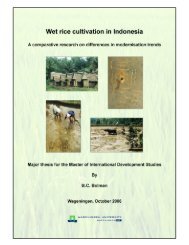The Students' Guide in Quantitative Analysis - Free Ebooks Library
The Students' Guide in Quantitative Analysis - Free Ebooks Library
The Students' Guide in Quantitative Analysis - Free Ebooks Library
You also want an ePaper? Increase the reach of your titles
YUMPU automatically turns print PDFs into web optimized ePapers that Google loves.
NOTES TO THE PRECEDING SCHEME. 6f<br />
Note 3. Removal of the fused mass,— Let the crucible<br />
cool until just below red heat, then chill it suddenly by<br />
plung<strong>in</strong>g it <strong>in</strong>to cold water conta<strong>in</strong>ed <strong>in</strong> a porcela<strong>in</strong> cas-<br />
serole, lay the crucible on its side and digest with boil<strong>in</strong>g<br />
water. <strong>The</strong> fused mass will generally become detached<br />
from the crucible and come out <strong>in</strong> a cake. <strong>The</strong>n remove<br />
the crucible, wash it, treat <strong>in</strong> a small beaker with a little<br />
cone. HCl to remove any adher<strong>in</strong>g particles of the mass,<br />
and add this solution to that of the Insoluble Residue<br />
{2). Should any portion of the fused mass, thicker than a<br />
film, obst<strong>in</strong>ately resist solution <strong>in</strong> the hot water, it ought to<br />
be removed only by patience and long boil<strong>in</strong>g; and no<br />
attempt should be made either to dig it out or to dissolve<br />
it <strong>in</strong> IICl ; lest by the formation of Aqtia Regla or free CI<br />
(<strong>in</strong> the presence of NaNOj, or Mn^OJ the crucible be<br />
attacked and <strong>in</strong>jured.<br />
Note 5. Sefakat!on of SiO^.— In order to render the<br />
SiOj entirely <strong>in</strong>soluble, it must be perfectly dehydrated.<br />
Tfce evaporation should be carried to dryness, the residue<br />
heated until odors of HCl can no longer be detected, and<br />
the mass is hard and crumbly. S<strong>in</strong>ce the residue is to be<br />
re-fused with Residue b, the dry<strong>in</strong>g may be completed, at a<br />
temperature somewhat higher than 100° C, <strong>in</strong> an air-bath.<br />
Note 8. Precipitation of BaSO^.—Avoid the addition<br />
of a large excess of BaCI^ solution. Add only 5 c.c. at first,<br />
and then after complete subsidence of precipitate, add a<br />
few drops to determ<strong>in</strong>e if any HjS04 rema<strong>in</strong>s unprecipi-<br />
tated, etc. <strong>The</strong>n proceed as <strong>in</strong> Fres., § 132, I, i. After<br />
decant<strong>in</strong>g the clear supernatant liquid, boil the precipitate<br />
with water, allow to subside, decant, filter, and wash with<br />
liOt water. <strong>The</strong>se precautions are necessary to dissolve<br />
out any other salts of barium, which are always carried<br />
Jown on the first precipitation. If the precipitate of BaSO^<br />
«s dark colored after ignition, dissolve <strong>in</strong> the crucible <strong>in</strong>








